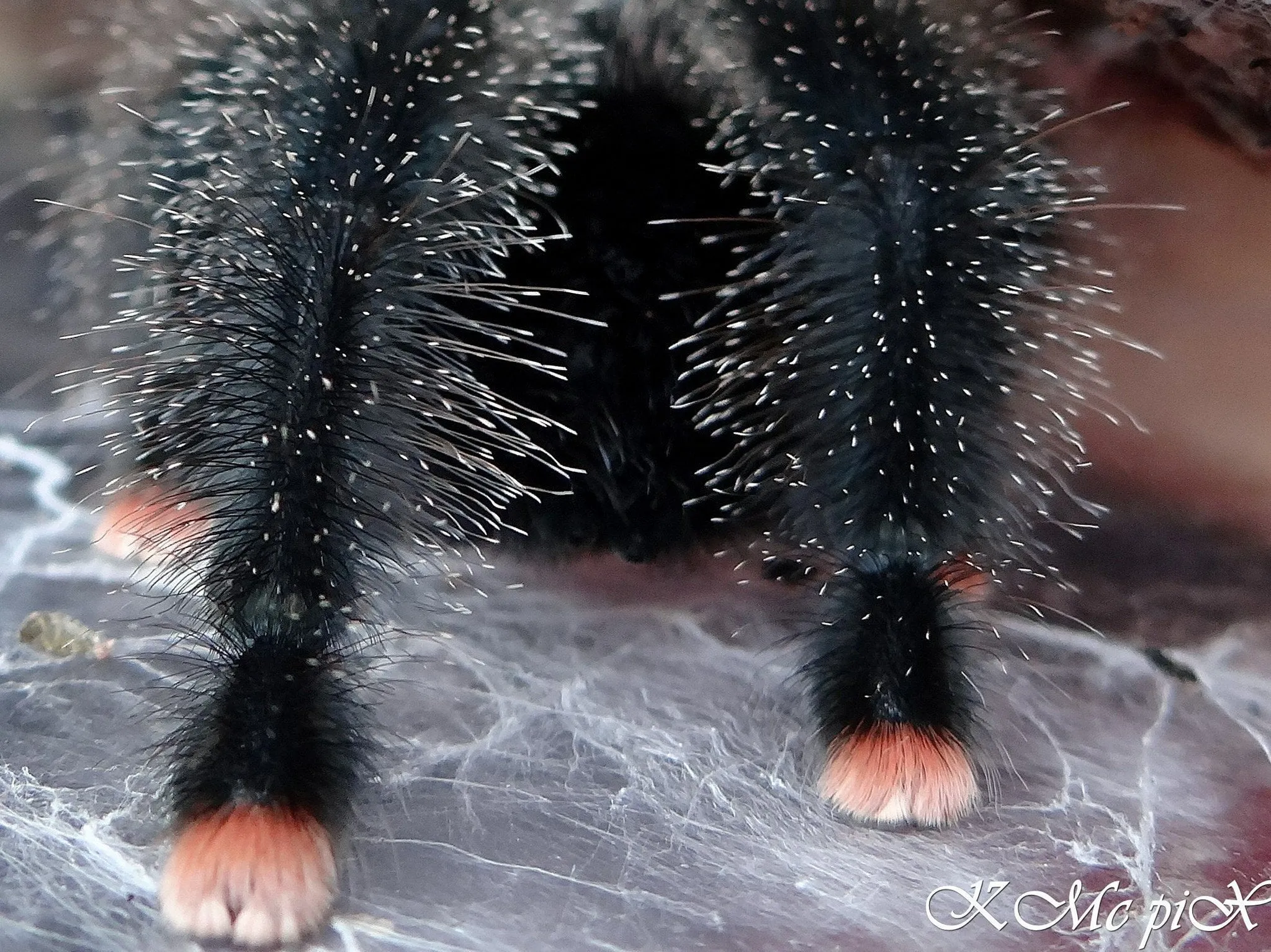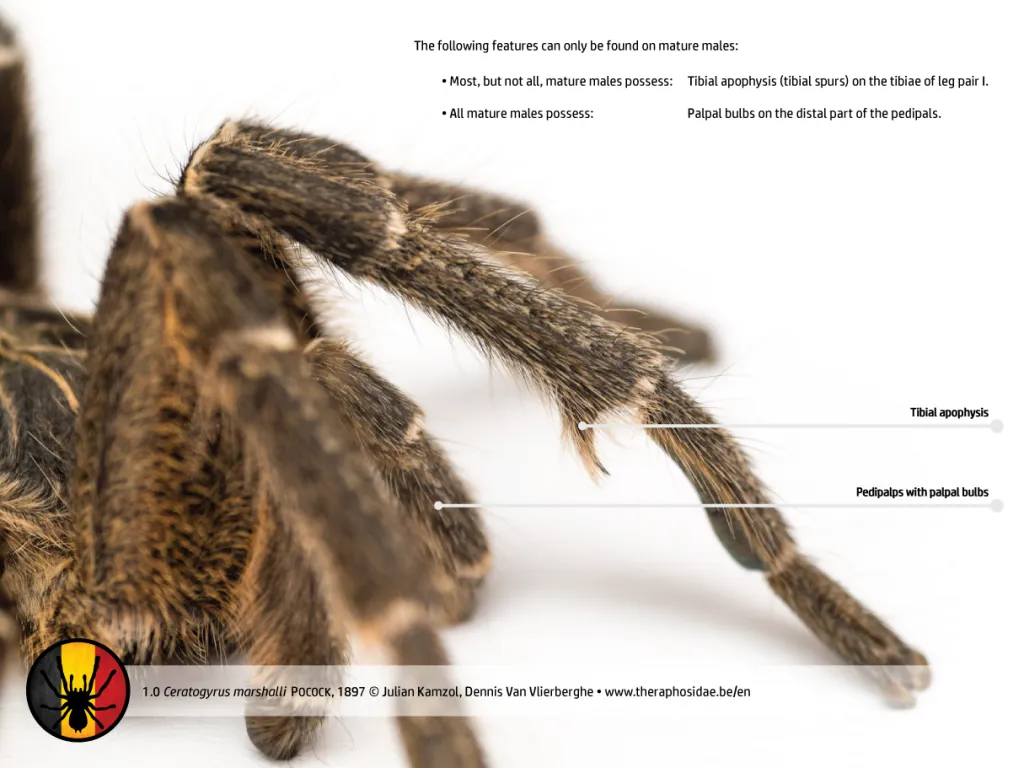What are Tarantulas
Tarantulas are large, hairy spiders belonging to the Theraphosidae family. These fascinating creatures are found in various habitats worldwide, from tropical rainforests to deserts. Known for their impressive size and diverse appearances, tarantulas captivate both arachnophiles and the general public alike. They are generally nocturnal hunters, using their keen senses to navigate and capture prey. Tarantulas are known for their relatively long lifespans, with some females living for over 20 years in captivity. Their unique characteristics, including their impressive legs and diverse behaviors, make them a compelling subject of study and fascination.
Tarantula Body Anatomy
Understanding the anatomy of a tarantula is crucial to appreciating its unique features, including its legs. The tarantula body is divided into two main parts the cephalothorax (prosoma) and the abdomen (opisthosoma). The cephalothorax is the fused head and chest, housing the tarantula’s brain, eyes, mouthparts, and legs. The abdomen contains the spider’s digestive system, heart, respiratory system, and reproductive organs. Covering the entire body is an exoskeleton made of chitin, which provides protection and support. The exoskeleton is shed periodically as the tarantula grows, a process called molting. This detailed structure allows the tarantula to perform various functions, including movement, feeding, and reproduction.
Tarantula Legs Count

One of the most distinctive features of a tarantula is its eight legs. These legs are not just for walking they serve multiple purposes, including sensory perception, climbing, and even defense. Each leg consists of several segments coxa, trochanter, femur, patella, tibia, metatarsus, and tarsus. The tarsus ends in claws, allowing the tarantula to grip surfaces effectively. The number of legs is a defining characteristic of arachnids, distinguishing them from insects, which have six. The specific structure and function of the legs can vary slightly between different tarantula species, but the fundamental eight-leg design remains consistent across the family.
The Function of Tarantula Legs
Tarantula legs are versatile tools that serve several critical functions, contributing to the spider’s survival and success. Beyond their primary function of locomotion, these legs are essential for various activities, including sensory perception, hunting, and defense. The legs are covered in sensory hairs and other structures that detect vibrations, air currents, and chemical signals. These sensory capabilities help tarantulas locate prey, avoid predators, and navigate their environment. The structure and design of the legs enable them to climb, run, and even jump, making them well-adapted to various terrains and hunting strategies.
Legs for Movement
The most obvious function of a tarantula’s legs is movement. They use their legs to walk, run, and climb. The leg’s structure, with its multiple segments and joints, provides flexibility and strength. The claws at the end of the legs allow them to grip onto various surfaces, from rough bark to smooth glass. When walking, tarantulas use a coordinated gait, moving their legs in alternating patterns to maintain balance and stability. For running, they can increase their speed by extending their legs and coordinating their movements more rapidly. The legs’ design and muscular structure enable tarantulas to move efficiently across different terrains and in various environments.
Legs for Sensory

Tarantula legs are not just for movement they also play a crucial role in sensory perception. They are covered in sensory hairs, called setae, which detect vibrations, air currents, and chemical signals. These sensory hairs are incredibly sensitive and allow tarantulas to gather information about their surroundings. For example, the hairs can detect vibrations in the ground, alerting the tarantula to the presence of potential prey or predators. They also help to sense changes in air pressure and temperature, which can be important for navigation and survival. The sensory capabilities of their legs enable them to perceive their environment and react accordingly.
Legs for Hunting
In addition to movement and sensory perception, tarantula legs play a vital role in hunting. They use their legs to capture and hold prey. The strong legs and claws allow them to grasp and immobilize insects, small animals, and other food sources. The legs also help to position the prey for feeding, ensuring that the tarantula can effectively consume its meal. Some tarantulas have specialized hairs on their legs that can inject venom, further assisting in prey capture. The combination of strength, sensory awareness, and specialized structures makes tarantula legs highly effective hunting tools.
Tarantula Leg Regeneration
Tarantulas have an impressive ability to regenerate lost legs. During molting, the spider sheds its entire exoskeleton, including any damaged or lost limbs. If a leg is lost, a new one will begin to grow during the regeneration process. The new leg starts as a small bud and gradually develops over several molts. The regenerated leg may not be exactly identical to the original, but it will generally function as intended. The ability to regenerate lost limbs is a significant advantage for tarantulas, allowing them to recover from injuries and continue to hunt and survive. The speed and completeness of regeneration depend on the tarantula’s age, health, and the specific species.
Tarantula Leg Care

Proper care and maintenance are essential to ensure the health and well-being of a tarantula’s legs. Provide a suitable enclosure with appropriate substrate and environmental conditions. This helps to prevent injury to the legs and support the spider’s overall health. Regularly inspect the tarantula and its legs for any signs of damage or abnormalities. If you notice any issues, consult with a veterinarian or experienced tarantula keeper. Avoid handling the tarantula unnecessarily, as this can put stress on its legs and potentially lead to injury. A clean and well-maintained environment and a nutritious diet are also important for maintaining the health of the legs and the entire tarantula.
Why Tarantulas Have Many Legs
The eight legs of a tarantula are a fundamental adaptation that contributes significantly to its survival. Having eight legs provides increased stability and agility, enabling tarantulas to move efficiently across various surfaces. The numerous legs also enhance sensory perception, allowing them to detect vibrations, air currents, and other environmental cues. Furthermore, the legs serve multiple functions, including locomotion, hunting, and defense. The eight-leg design is a key feature that allows tarantulas to thrive in diverse habitats and successfully navigate their environment, hunt prey, and evade predators. This characteristic makes tarantulas a fascinating and successful group of arachnids.
